Distant Worlds is a real-time space 4X strategy game developed by CodeForce and published by Slitherine and Matrix Games. The series debuted in March 2010 with a first release offering a huge living universe with a lot of things going on, but also a lot of problems. So, I could only recommend the game to hardcore fans of 4X sci-fi gaming at release time, and even there not for all.
But, with the subsequent patching work and the released expansions the game got better. Much better. In fact, the improvement’s extension was so great that by the time the second expansion was released (Distant Worlds: Legends), the game became extremely enjoyable, an experience that all 4X fans and even non-fans could finally enjoy. Shadows, the third expansion, brought even more content, like the ability to play since the early days of pre-warp. It also extended the ground combat, included a new pirate gameplay system and added some badly needed performance improvements.
I thought that was it for the first installment. But, the developers had other plans. Before any work would begin in Distant Worlds 2 (which was already semi-officially announced), there would be a fourth expansion dedicated to extending the game’s modding capabilities. And that’s where Distant Worlds: Universe comes in.
Distant Worlds for Newcomers
But before we dive into Distant Worlds: Universe I think it’s important to talk a bit about Distant Worlds in general. We have produced a comprehensive set of previews and reviews for all the previous Distant Worlds expansions over the past few years. So, if you’re new to the series you may find those articles to be a good place to start to know everything we think about this game (see Distant Worlds review, Return of the Shakturi review, Legends review and Shadows review). However, to make it easier for people completely new to Distant Worlds to read this review I decided to create this section to summarize what you can expect from this game. If you’re already familiarized with Distant Worlds, you can skip this and move on to the next section: “What is Distant Worlds: Universe?“.
Distant Worlds, and now the complete product, Distant Worlds: Universe, is a space 4X game where the focus is put on off-world activities, meaning things you do outside your planets. So, you’ll be looking for suitable places to build new mining stations and colonize new worlds and then hurry on protecting your space assets with spaceships and space-based defensive bases. There are a lot of resources to exploit; luxuries will increase your empire development for more income and strategic resources are needed to build more spaceships for a total of 41 different resources to manage.
Resources need to be mined and transported to where they are needed, for something that needs to be manufactured somewhere, to be consumed or to be sold through trade to other empires. Now, one of the key aspects of Distant Worlds is that the player is only responsible for deciding where to build the mining stations, the star bases and where to colonize. Then, it’s the game’s private sector – a collection of autonomous freighters, passenger ships, mining ships and mining bases – who is responsible for doing the actual goods transportation. It is this private sector, this portion of the game you don’t control, that ultimately decides what to transport where and to which races to do trade with.
Now, this may seem a bit off-putting at first, since a big chunk of the game is outside of your direct control, I surely had and still have mixed feelings about this autonomous important system which you can do almost nothing about. But, with time, this feature has been perfected and you may say that it is one of the most important factors at distinguishing this game from others. It does help on providing the aliveness feeling this game is so well know for, that’s for sure.
This wouldn’t be a 4X game without research and diplomacy. Research is done via three distinct branches: “Weapons”, “Energy & Construction” and “High-Tech & Industrial”. The first is self explanatory. The second branch deals with power, shields, engines and space construction. The last one deals with colonization, planetary facilities and other ancillary systems. To have more research you build more space laboratories. Certain characters will give you bonuses when stationed in these space laboratories. The tech tree is big enough and will keep your busy through your bigger games. I surely never felt the need for extra things to research.
Diplomacy is detailed and feels right for the most part. You can do all sorts of deals with the other races, from signing trade agreements, mutual defense pacts and trading technologies and information. You feel that you understand what your stand with the different races is at all times, which is a very important aspect to get right in a game like this. It’s also easy to know what others think of each other. Overall, diplomacy is very good and will not frustrate you with obscure information or mechanics. It will tell you exactly what you need to know for you to make informed decisions when dealing with the other empires, which is essentially what diplomacy is supposed to accomplish.
Space battles happen in the same layer as the strategic game, and due to the game’s real-time aspect it will not be long until more than one battle instance may be happening at the same time, especially if you play in bigger maps. And this is where the game can become a little bit more complicated to control as you can only attend one battle at a time. However, the game allows you to automate every aspect of the game. So, you may decide to automate some fleets while keeping others under your manual control. This way, the auto fleets can keep your empire safe according to your instructions while you may leave only a couple strike fleets under your full command. The game allows you to automate the following aspects: ship design, research, colonization, intelligence missions, troop recruiting, colony facility building, treaties management, among others. Basically, almost everything. In fact it’s even possible to just watch the game play itself if you want to.
The game has a ship design feature, and quite a detailed one too. You can choose between many different types of hulls for different types of roles, from military, trade, passenger liners, research laboratories and all kinds of space stations. So, although you can’t control your private sector directly, you can still design all the ships they use. The design system isn’t very pretty and you’ll most probably get lost easily at first. But, there are spots in the UI that you can click for hints, and little by little you’ll get to understand what everything is for. By far the most complicated subsystem to design and manage is power. You will need fuel cells to store fuel (from different types of fuel available) and then choose the appropriate number of reactors necessary to propel the ship to the maximum speed while still being able to fire weapons to their full capacity. It will get you some time to figure out how to balance your ships’ power requirements, but eventually you’ll get there.
Distant Worlds’ ship design system may seem a bit daunting at first but I find it fun to design all my ships, including the ones controlled by the private sector. Of course, you can automate this aspect if you wish to.
When, or if you get tired of running a space empire, you may decide to give it a go as a pirate faction instead. Distant Worlds offers a distinct way to play the game after the third expansion, Shadows, where you can take control of a pirate clan and raid other empire’s ships, control their colonies or smuggle resources as requested by the other empires. So, with pirates, the idea is not to expand through colonization but to grow in power by controlling the most colonies you can by constructing pirate refuges in them. With time you get more and more control over these colonies, until a critical point is reached where you may decide to build your own colony ships there and start colonizing the galaxy if you wish.
Playing as a pirate is a very distinct way to play, surely a very different one from the usual empire-building style of 4X games. But I found it fun for a go or two. At least it has the merit of enabling the player to experience how it would be like to be behind a pirate faction where usually these appear as minor factions in 4X games that you can’t play with. I think the devs really succeeded at offering the pirate experience, although I’m not very fond of that particular type of play myself.
But there’s much more to Distant Worlds, like tourism, migration management, ground combat (which is auto-resolved but has some depth to it in the number of troops available and its specializations). There are also many ruins to explore, some giving important bonuses. There’s space monsters, some quite dreadful like the legendary SilverMist which is a deadly menace that consumes everything in their path. There’s different kinds of governments, race-specific victory conditions and many types of characters to manage, like Troop Generals, Ship Captains, Ambassadors, Colony Governors, among others.
If you wish to know more about Distant Worlds in more detail have a look at our reviews (see Distant Worlds review, Return of the Shakturi review, Legends review and Shadows review). The remainder of this review will now focus on the Distant Worlds: Universe expansion itself and I close with some final thoughts that you may find useful as an overall assessment of the complete Distant Worlds: Universe package.
What is Distant Worlds: Universe?
Distant Worlds: Universe is the 4th expansion to Distant Worlds, and it’s also a standalone expansion pack comprising the original version plus the three previously released expansion packs (Return of the Shakturi, Legends and Shadows) combined into one single package.
Universe is also the result of enabling further areas of the game to be moddable (the expansion’s main focus). So, almost everything in the game can be modded now. This includes redesigning the tech trees, creating new technologies, modify almost all the images in the game, sound effects, define new resources, alien races characters, and others. All done through text file manipulation. Ingame it’s also possible to add ruins and setup custom events that work like story triggers that may change the diplomacy status between races; other triggers may kill a specific character, breakthrough a specific tech, establish contacts with unknown empires until then, and other actions. So, you can ultimately define your own storyline within your game with this new ingame event system, if you wish.
Along with the all-in-one package ease and the extended modding and customization capabilities, the devs also included a custom made storyline, or theme, built with the new modding capabilities called “The Ancient Galaxy”, where it’s possible to build your own planet destroyers and research and deploy the Xaraktor virus. It’s probably not a good place to start if you never played Distant Worlds, but it can be interesting for veterans wanting to experience something new.
So, the focus of this 4th expansion was modding, but does it contain anything else?
Any improvements to the existing game?
Officially, there were no more changes announced apart from the modding extensions that I describe above. But, the expectation was that the new expansion could be an opportunity to improve certain areas of the game, like for example the AI. So, are there any noticeable improvements? I believe there are significant improvements.
For starters, I feel that the game is harder now. I played with the same settings I usually play, which is large game in “hard” difficulty and I watched myself fall behind in my games quite easily this time around. Money didn’t seemed as easy to come by as before and the AI seemed to play the diplomatic game much better now, being more active raising trade embargoes, and seeking allies more diligently than before. I also witnessed races paying pirates to attack me because I raised an embargo on them, and that’s a good thing :)
Another area I feel runs much smoother now is resource management. Resources shortage is a reality now, and you do need to review your mining plans more carefully this time around. I think this is very important because being Distant Worlds a game much about mining and trade, it’s good to see that your strategy does matter if you want to keep a steady flow of resources required to build your ships but also the required luxury resources to trade with others and keep your population happy.
The private sector is also more diligent at addressing resource shortages and at satisfying smuggling missions when you play as a pirate. It wasn’t rare to see constructions stopped across the galaxy before without a clear reason why. Shadows (the 3rd expansion) introduced the concept of “resource shortage” which made it easier to know why a certain construction stopped and because of which resources. But, it’s only now in Universe that I feel the private sector works in a fully satisfactory way in addressing these shortages.
The text font has always been an issue with this game, namely the readability and the size of the font in some places. This issue was addressed again in Universe and it’s now possible to choose between three zoom levels in one of the UI panels. Some other noticeable increases in font size can be seen in the event messages list, in the Galactopedia, the component guide in the ship design screen and in the diplomacy tradeable items. All in all I think the font issue is not a major issue anymore. Yes, not everything was fixed, you can still spot a few places where the text blurs, like at game setup or in other secondary panels, but overall I think the font issue was dealt with satisfactorily.
Now, one other change which I’m not sure was for the best is that pirates are now much more menacing and annoying than before. Forget about the other empires, your major threat now aren’t them but the nearby pirate clans. I mean, it was so annoying that I’d swear that the AI was looking in the code to know where I had my weaker defenses to strike me down where it hurt most. It’s in situations like this where you start wondering whether the AI is cheating or if it reached that level of perfection. Frankly, I don’t know the answer to that one but one thing is certain, pirates are a pain and if you don’t like to be facing riders destroying your mining stations every 5 minutes, you better choose few pirates at game setup, and give yourself a favor and choose the “pirates don’t respawn” option too so that they don’t come back. Personally, I like to focus on developing my empire and dealing with the other empires as I progress, but I dislike to be constantly distracted and harassed by annoying pirates. Of course, if you’re not like me you may find pirate hell to be a fun challenge. Fortunately, you can tone down pirate power at game setup or even eliminate them from the game entirely, so this isn’t a critical issue.
Trying a Mod – Star Trek The Picard Era
No review of Distant Worlds: Universe would be complete without playing a mod built specifically for Distant Worlds: Universe. So, it was with great rejoice that I was given the opportunity to try out a mod that the Distant Worlds’ “Trek Team” had been preparing for a while now.
The mod was developed by Igard, ehsumrell1 and a few other members of the Distant Worlds’ community and it was released on August 19th 2014. The mod is called “Star Trek The Picard Era” and it was as easy to install as to unzip and copy a folder to the “Customization” folder of Distant Worlds: Universe. In no time I was ready to start trading some Romulan ale! And happy I was to see that it was indeed one of the changed resources in the game :) You can download the mod here.
Yep, it feels like playing in the Star Trek Universe. I liked to have more personalized characters this time around instead of the uninteresting generic characters that the base game provides you with. Nothing like having Ambassador Spock in your diplomacy team or having Kathryn Janeway leading your strike fleet.
It’s Star Trek, so you can play with many Star Trek Universe races for a total of 22. You can play with the Klingon, the Federation, the Romulan, Dominion, Ferengi and even the Borg, among others. And there are playable pirates too: The Orion Syndicate, The Maquis, the Korgath Barbarians and the Khan Privateers.
Then there’s the ships, of course. And, I’m not a modding kind of guy myself, but I must admit that there’s nothing like being able to see and control the ships of your favorite show in a game. Of course, I named my first cruiser design the SSF Enterprise (SSF for Space Sector Federation). As time went by I made sure to beeline to photon torpedoes and in no time I had my “SSF Enterprise A Photon” design ready for commission. When the opportunity came I designed my capital ship and named it SSF Enterprise B Galaxy Class, but next time I’ll probably name it SSF Excelsior or perhaps SSF Vengeance :) It’s a lot of fun to be able to design your own Star Trek ships, and I can easily see myself playing Distant Worlds with the Star Trek mod for a long while just because of that.
But it’s not only the races, characters and the ships, the music is also appropriate to the theme with many tunes taken directly from the Star Trek Universe. Some tunes I recognized immediately, others I did not, but it’s been a while since I last watched any episode of the “The Next Generation” series.
Then there are some modified resources like the famous Romulan Ale, but there’s also Klingon’s Blood Wine, Bajoran’s Hasperat Spice, Cardassian’s favorite beverage – Kanar, and Targ Meat, a delicacy for the Klingon.
There are also changes to the weapons with different images and some different sound effects. The UI also suffered a few changes presenting a few different icons. And the “click” UI sound is much better now, so are the alert messages which appropriately sound like the red alert signal of Star Trek.
I played as the Federation in a small map with 250 stars over 6×6 sectors. In hard difficulty, as usual. And with few pirates, of course. The Ferengi, far to the North, were my best friends and trade partners. Next to me were the Sheliak and the Yridian. They didn’t like me and the sentiment was mutual, but we managed to coexist somehow. I guess they were afraid of my armada equipped with the latest generation of photon torpedoes.
I had few battles throughout the game, only a few skirmishes with two pirate clans which I ended up destroying. And while I won the game I didn’t feel so confident through the entire game. My neighbors were very unfriendly, but with time I built the biggest armada of the galaxy and so I was allowed to develop my empire peacefully with aggressive colonization and a cautious defense strategy.
Just a small note to the devs, some characters were perhaps a bit too powerful? I don’t know if the other races had equally powerful characters or not, but my leaders, my intelligence agents and scientists were quite powerful. Especially the leaders, which I think may have allowed for a easier game since one had +34% Colony Income and +28% Population Growth. One of my Intelligence Agents had +57% Espionage but also +52% Sabotage and +75% Psy Ops. Not that it’s not cool to have big stats, but perhaps these could be toned down just a little bit, or perhaps only show a big number on one particular ability.
Playing the Star Trek – The Picard Era mod was a lot of fun, and I’m sure my next Distant Worlds’ games will also be in the Star Trek Universe. I didn’t play any mods before Universe, so unfortunately I will not be able to compare how much more powerful the modding system is now with respect to before. But, judging by the modding extensions announced for the game, which include almost all the images in the game, sound effects, new resources and alien races characters I have to assume that this mod wouldn’t be as impressive without the Universe expansion.
Final Thoughts
Distant Worlds: Universe addressed one of the biggest complaints made by the players and potential buyers over the years: it offers the complete Distant Worlds experience in a single package with a significantly more affordable price. It’s not a cheap game by any means but it surely is cheaper than before. And, the amount of content it offers and the quality of the product at this point totally justifies the price tag.
Now, if you already own the previous expansions (up until Shadows) and were looking for something radically different, like new features and a very different experience, Universe doesn’t offer that. With this 4th expansion you’ll get basically the same game as before only slightly enhanced and improved as I pointed out before. However, while offering basically the same gameplay, Universe does have the potential to allow for some powerful mods to come to life. The Star Trek Picard Era mod is one such example. While not radically altering the game, the mod does allow for the player to experience something new and have more fun than before. So, if you’re fond of Star Trek it may justify the upgrade for you. And, I also see a Warhammer 40K mod (for Universe I believe), one for Babylon 5 and an EVE Online one which seems quite popular, though I’m not sure if this one is updated for Universe.
Now in a general sense, Distant Worlds: Universe, as whole, the final verdict. Who is this game for? Who will like to play this game, and who will not? I’m convinced that all 4X fans in general will have something positive to take from this game. Even if you happen to be much more into turn-based than real-time and like to take your time playing (like I do), I think that if you play on smaller maps (with fewer number of stars and races), decide to play the game fully manual and pause often, you’ll enjoy this game. In fact, you’re in serious danger of enjoying this game a lot. The customization options are immense, and the replay factor is almost infinite. So, whatever is your preferred style of play I’m sure that you can find a great space 4X game experience in here.
But, is this game easy to learn? No. Is it simple to master? No. This is a complex game full of things going on that will require a lot of your patience and attention. But, while complex and apparently daunting at first, the game rewards you with the most exquisite universe full of interesting life, stories and challenges to play. No where you will find more to be in control of a space faring civilization in an alive universe than in this one. So, Distant Worlds: Universe is not an easy game for newcomers to the genre or for casual players but with its good documentation, both in terms of manual and ingame documentation through the tutorials and encyclopedia, and its mature user interface, Distant Worlds: Universe deserves to be experienced by all kinds of players at this point, and while some will probably find the game too difficult to enter, others will find its beauty and perhaps risk to get hooked into the 4X genre ever since.
Distant Worlds: Universe is a game that will give you a lot to do in the years to come. It’s not the prettiest, nor the most approachable, but I’m sure that it is the best space 4X game money can by at the moment, and I recommend it to anyone interested in this genre.
Note: If you already own the base game and any of the expansions, Matrix Games has created a system for you to upgrade to Universe where you get a $10 discount for every game/expansion you own. See how to upgrade and how to redeem a Steam key here.
|
Space Sector score:
9.0/10
excellent
|
|---|
| The Good: – Huge universe full of things going on (alive universe) – Good automation options let the player decide where to focus on – Very rich diplomacy options. Negotiations feel right – High degree of customization options – Immense replayability |
| The Bad: – Fleet management not very intuitive and not flexible enough – Leaders’ look & feel could be improved with more portraits and personality – Steep learning curve |
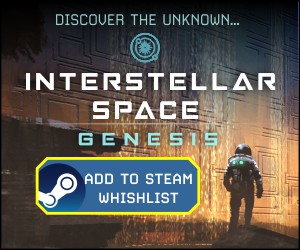
24 Comments
Related Articles:
- Distant Worlds: Star Trek Mod – Archer Era
- Distant Worlds: Shadows – New Expansion Details
- Distant Worlds: Universe to Launch in May 2014
- Distant Worlds: Universe – More Modding and Wrap-Up Pack
- Distant Worlds: Return of the Shakturi Gets a Major Update

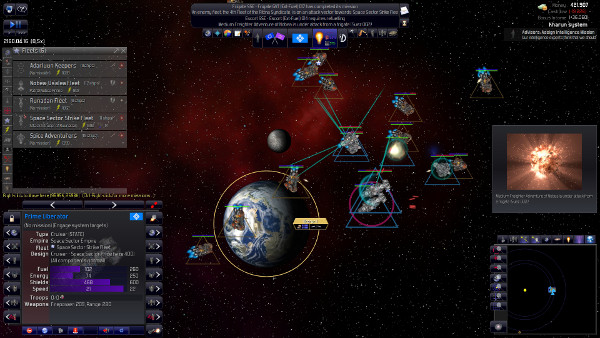
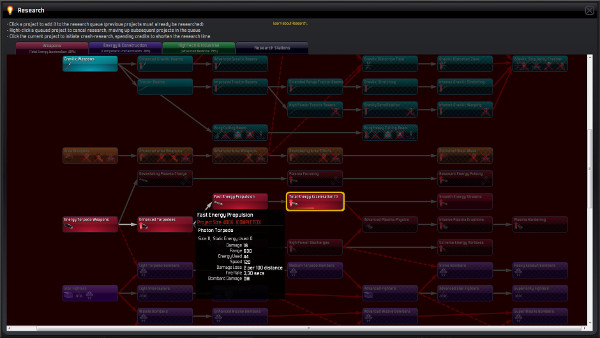
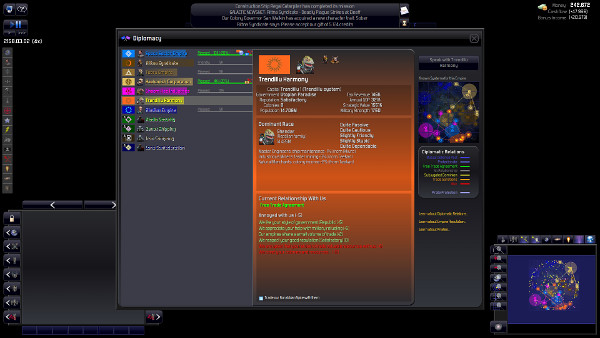
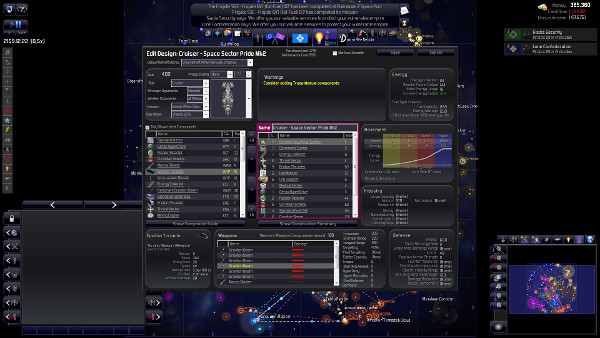
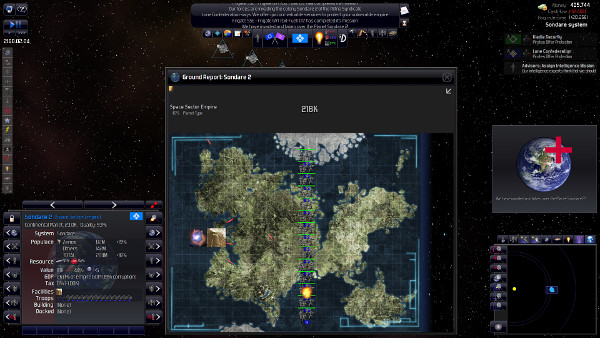
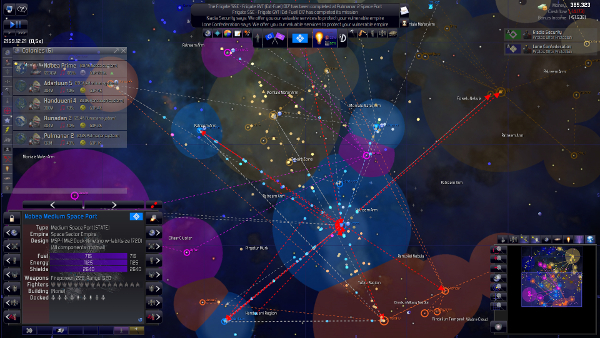
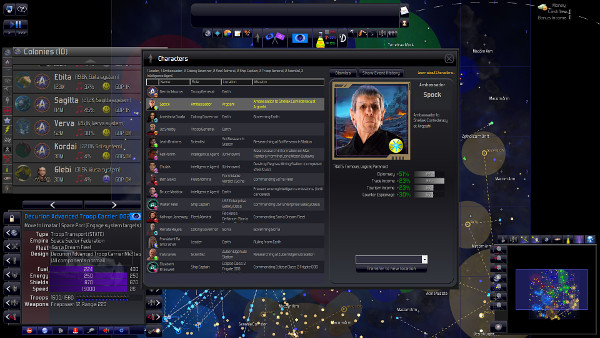
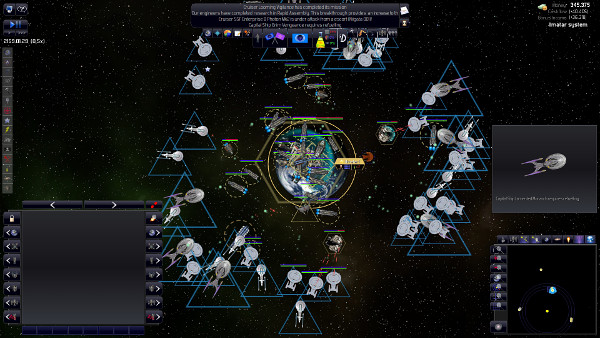
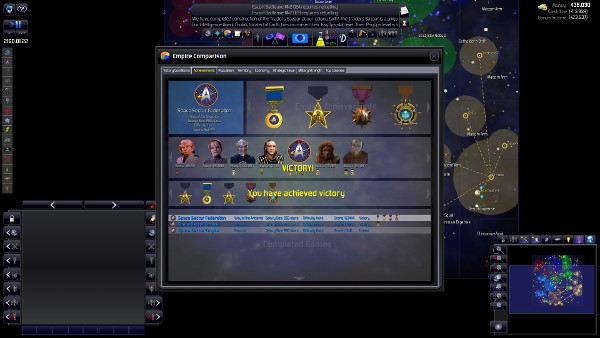

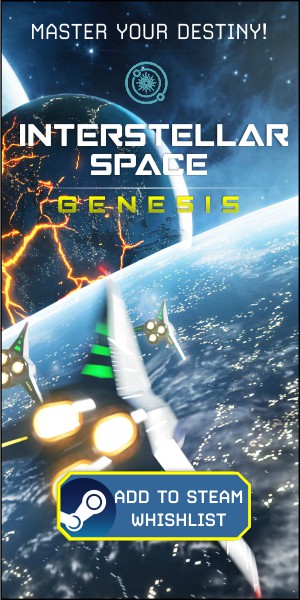
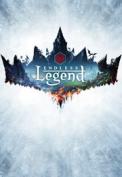
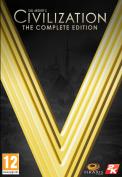


Wow, first one to comment on this review!
First off, great review, Adam! Comprehensive, insightful, and balanced. Couldn’t ask for more.
I purchased DW:U during the initial Steam sale, and although it cost more than I’m used to paying for a game, I have no regrets. That being said, however…
This is NOT a game for micro-managers. Too much is happening at all times to effectively manage. In fact, some “Let’s Play” videos suggest the best way to learn the game is to allow the AI to control everything, and only take control of a single ship. Generally, I allow the AI to control most aspects of the game, and I try to influence the development of my empire by directly controlling research, espionage, military actions, purchase decisions, and colonizations. I have found that the AI is more aggressive militarily than I would desire, and will bankrupt me if not reined-in.
I fully agree with Adam’s evaluation about the pirates: “Forget about the other empires, your major threat now aren’t them but the nearby pirate clans.” I play with fewer and weaker pirates, but nevertheless pirates are always my main opponents, and I have completed several games without going to war with the other empires because the pirates are the major target of my military! Pirate aggression and strength are still imbalanced and need further work by the developers (IMO).
The game is very stable, and I’ve never experienced a crash or discernable bug. However, the UI is NOT intuitive, and I recommend that any new player study the manual and tutorials.
All-in-all, Distant Worlds:Universe is a unique game but will not appeal to every gamer. While I enjoy my time with the game, I wish the developer provided a demo so that gamers on the fence wouldn’t have to depend on testimonials to determine if DW:U is right for them.
Thanks Jeff!
I guess everyone has its own preference on how to play, and the game does favor that diversity. I’m a micro-manager myself and I play with everything in manual leaving a few aspects under advisor suggestion, but nothing in my games is automated apart from the occasional defensive fleet. I design all my ships, conduct all the diplomacy, do all the research, colonize all my planets and fight almost all the battles.
However, sometimes too much is happening at the same time, as you say, but I found that the best way to deal with that if you don’t like it, is to play in smaller maps. That’s the way I tend to play these days and I found those smaller maps to be a lot of fun, at least for someone like me who likes to control every aspect of the game. That said, I also play in large maps occasionally, and find that I can still control my entire empire, at least until a certain point. My games tend to take a long time to finish though, when they finish at all.
The mandatory forum tutorial to read if you want to jump right in and micromanage everything starting with your first game (and in Pre-Warp) :
http://www.matrixgames.com/forums/tm.asp?m=3508583&mpage=1&key=�
(With the caveats that it’s sometimes inaccurate, that the writing style is… peculiar, and that if I were to micromanage everything, I wouldn’t play on such a big map.)
The tutorial doesn’t mention how to micromanage when you are playing a 1400 star galaxy and the combat warnings begin to sound like rapid morse code…….
Seems to me that there are only 2 things you can do.
1/ Stop micromanaging and hand off most of your fleet control to the AI.
2/ Quit and start a new game with a much smaller map.
This is a fundamental problem with the RT game design.
A good balance you may want to consider is set engagement stances for System Defence Ships i.e. via Empire Settings. In particular “engage system targets”. I don’t put Defence Ships in fleets and only micromanage them early game when they are weak. They remain on Manual control, not Automatic, but apply the engagement stance.
I rarely need more than 5-7 Offensive Fleets (so 5-7 Fleets total) which makes Fleets very easy to find and micromanage. Fleets remain just as easy to micromanage late game as I still only have 5-7 Fleets.
In short, every ship is on Manual, every Fleet is on Manual, and I have no problem playing on the largest maps with max pirates.
It was a great game. We want the second game…
There’s a couple of good mods now that really spices up the game nicely. My favorite is Icemania’s AI mod.
Thanks dude. The AI Mod was partly inspired by Mark’s questions about the Distant Worlds AI, so I hope that he tries it and gets slaughtered.
http://www.matrixgames.com/forums/tm.asp?m=3647528
Don’t mind if I do. Better AI in the base game is definitely a good reason for upgrading to Universe. The existence of an improved AI mod is a very nice bonus. I look forward to giving it a go. And getting slaughtered. :)
Thanks for the nice, detailed review Adam, I bought Universe based on your assertion that game-play and AI had improved and I agree that it is indeed noticeably improved. That’s really my only reason for upgrading to Universe since the modding angle does not interest me even slightly.
I play small maps all the time now, usually as small as 250 stars. But I don’t really want to, I’d love to play large maps and get that epic feel. I feel that I am forced to play small maps because the RT-all-the-time game design breaks the game with larger maps. This is something they should definitely try to fix in the sequel.
I should be able to play whatever size map I want without the game becoming an unplayable, frantic, chaotic mess or handing everything over to the AI. The fact that that I cant is this game’s biggest and most obvious design flaw. I think that instancing combat so that you don’t have multiple combats *per second* all happening simultaneously in different parts of the galaxy would be the way to go.
Thanks Mark, I’m glad to have been helpful.
I also tend to play smaller maps these days, I find them to be a very enjoyable experience. But, I as I said in an earlier comment I also play large games occasionally and find that I can get the epic feel you mention, well, at least until a certain point, where everything is already decided or I’ll need to automate a few parts of the late game to proceed. Event management is also necessary at some point so that you’re not interrupted too often.
You said, “I should be able to play whatever size map I want without the game becoming an unplayable, frantic, chaotic mess or handing everything over to the AI. The fact that that I cant is this game’s biggest and most obvious design flaw.”
While I agree to an extent, I think this isn’t a DW’s exclusive flaw. I think it’s a 4X flaw still to be figured out. Even in MoO2 you could reach a point where the game became unplayable if you didn’t handle things to the AI and automate most of the battles after a certain point. And this applies to many other 4X games as well.
But we may come from slightly different places. I tend to prefer smaller/medium maps, I never play Huge in Civilization for example, and Large is rare. I usually play Standard Civ games. In space 4X terms that would be between a small and medium galaxy perhaps. I make an exception for DW because the epic feel is really something that deserves to be experienced in a large map. But I get that every 4X player is different to what map size is concerned. And DW does offer many customization options, so I guess the large majority of people will find their optimal settings in that huge array of game possibilities.
However, I agree with you that pausing the game to instantiate combat could have been a very interesting idea to avoid having multiple combats happening at the same time. Perhaps in Distant Worlds 2.
Adam wrote: “Even in MoO2 you could reach a point where the game became unplayable if you didn’t handle things to the AI and automate most of the battles after a certain point.”
I’d agree with that but I think the reason is very different from why it becomes unplayable in DW.
In late-game MOO2 its more a matter of not wishing to babysit each of your massive Doomstar fleets (which will crush all opposition) because it would be boring to do so, not because it would be impossible. It would easily be possible if you really wanted to and had the patience. And you could focus on every single minute detail if you really wanted to. Nothing about the game design would stop you.
On the on the other hand, with a late-game 1400 star DW map it is actually impossible to micromanage all your fleets whether you wish to or not. The reason is that many combats occur simultaneously in different areas and you can only focus and direct one at a time in RT. Pausing helps but it soon reaches a point where even pausing isn’t enough to maintain control. This happens around the time that combat alerts start to resemble machine-gun fire.
Allocating combat to the AI in MOO2 is a matter of convenience. But in DW (on large maps) it’s simply a matter of necessity.
You said: “The reason is that many combats occur simultaneously in different areas and you can only focus and direct one at a time in RT.”.
Correct, in RT. So, you’re basically saying that the “flaw” is an RT one, which turns this into an RTS vs TBS argument more than a DW specific issue. The impossibility to fight every battle is a natural consequence of the game being played in real-time. Of course, the bigger the scope, the bigger the issue will be.
Now, this doesn’t mean that DW couldn’t have an extra feature which allowed the game world to come to a pause to allow you to micromanage all your combat engagements if you want to, like you suggest. The thing is, I’m not convinced that such a feature is desirable in a game like this where you can have 1400 stars as you say, and could end up having multiple combat engagements every 5 minutes. Would you want to fight multiple battles every 5 minutes or would you prefer to hand over some of that to a competent AI? It doesn’t need to be DW, think any RTS game where you have 1400 star systems and multiple battles every 5 minutes. At most that feature should be option, no?
In conclusion, I suspect that handing over some control to an AI may be a necessity when you want to play real-time games with a gigantic scope and the simulation detail that DW allows. If you don’t want to hand over any control to the AI, then I think the only way is to have a tighter scope and a more abstract experience to allow for a more controlled experience, which is what you usually find in TBS games. Or, you play smaller maps in RTS games :)
@ Adam,
Yes definitely an RT flaw and not specific to DW. Its just very noticeable in DW because the huge scale magnifies and exaggerates the problem, especially on large maps.
But the issue is not inherent to every RT game, just RT games that use continuous, global RT. For example SOTS has RT combat but it is instanced so you only ever have to worry about controlling one RT battle at a time – even if 10 are happening in the same game turn. Problem Solved. Of course DW is vastly superior to SOTS in general, but not in this particular design area.
Adam wrote: “Would you want to fight multiple battles every 5 minutes or would you prefer to hand over some of that to a competent AI?”
I’m a bit of a control freak and hate handing *any* of my game over to the AI so I would have to answer Yes; I would fight the battles and retain control over my game. It would be greatly preferable to completely missing important events simply because I cant be everywhere at once.
Would it get tedious? Yes. But even if I get bored to the point that I stoop to auto-resolving, at least I’m fully aware of what I am resolving and have a chance to think carefully about the pros and cons of doing so rather than completely missing the entire event because my attention was focused elsewhere while it quietly happened in the background….. as happens all the time in DW.
Bottom line: With large-scale RT games like DW, you LOSE SOME CONTROL OVER YOUR GAME…. either by handing control over to the AI or missing potentially important events because you are not omniscient. I consider this a bad thing, but I’m sure that other gamers will have a greater or lesser tolerance for it. For me, very small maps are the answer and DW is indeed an excellent game when played this way.
They really fixed the fonts in Universe, things are easily readable at 1440p on a 27″ monitor, and performance is also great. Just as good, it’s on Steam for those that are too lazy to use another service. There are no more good reasons not to get this game if you’re a fan of the genre!
I have to agree this is by far the best 4x game there is, the sheer number of things to do and story ark plus different races to try out is simply amazing, if this had an ai unique to each individual race that would have been class, but alas that may be a feature of distant worlds 2.
The game is pretty good. For a small studio, it’s outstanding even.
Perhaps one of my biggest letdowns is the graphics. It’s understandable for a small studio and gameplay trumps graphics, but it’s something that I would have liked to have seen improved in some way with expansion packs.
I think that control freak types like myself are always going to be at odds with this title because so much of it is automated. Personally I think a Total War type of real time tactical, turn-based strategic would have been a better option.
Actually, the best benefit of this game is that the developers listened to feedback. They may have been slow at times in implementing things, but they actually listened. That is in contrast to many other developers. I think that may be the reason why this game has come such a long way from release.
I tried this game, but it looks like something from 1999. The game handles poorly and its a very woeful attempt at 4X. I thought I would never complain about seeing too much complexity in a game. But I must protest with this title. And its too complicated in all the wrong places. I am an advocate for complexity if it adds to immersion or realism. But this one does not.
Mr Wave gives this 2 thumbs downs.
A great review. I have bought every one of these games in the series.
However, I have never been able to play for more than 10 minutes except on automatic–but it is still great fun to watch as a galactic simulation.
I just set the base attributes of my civilization and let it run in be background.
I never think that moving a ship around is going to make that much difference and I am overrun with ships in the first 10 minutes, so I give up and set it to automatic.
great game, I just have never played it, just watched it.
yours
Sam
Before buying DWU I read many reviews and watched several LPs (mainly the excellent LPs by Larry Monte). I was fascinated by the universe that is created by DW and I was sure it would be a great game for me. But I can’t get into it.
I started with micromanaging everything and I think that’s a good way to understand how everything works. I would like to play it that way. But relatively soon it becomes confusing to handle the growing complexity (and I think the UI doesn’t help there). And when I turn to automation I gradually lose the feeling of playing the game. There are lots of small AI decisions that are not really comprehensible/traceable.
I’m not saying it’s a bad game, but you have to give up a lot of control to play it. I like the idea of automation, but in DW there is not enough feedback and not enough UI tools to still feel in control.
I guess there is a reason that there is no demo for DW. I wouldn’t have bought it, if I had the chance to play it for some time. But well, at least I learned something about games, complexity, UI problems.
Sounds like you’re stuck in the steep learning curve. I get the feeling that you feel comfortable micromanaging in your games, so my suggestion is that you don’t turn on the automation, none of it. Because, like you say you lose the feeling of playing the game after you turn it on. You may leave some suggestions on if you wish to because you can learn a thing or two from the AI suggestions.
My other suggestion is that you play in a smaller map at first to get the hang on things. Go with a “Custom Game as Standard Empire” and choose Star Amount: Tiny (250 stars), “Small” physical size (6×6 sectors) and 6 rival empires. Don’t worry, smaller maps are a lot of fun too. Choose few and weak pirates or simply don’t go with pirates altogether while you learn to play the game.
Then, play at reduced speeds: 0.25x or 0.5x and pause often to assess things. Have a look at all the UI icons to get the basic understanding of what everything is for. Start by choosing your research and then define your exploration by assigning your exploration ships to explore entire sectors at a time and slowly start doing other things like checking which resources you need and where you can find them in nearby planets. Then build a mining station, and if it’s not in the same system as the homeworld guard it with some escorts (check your design screen to see if you want to make special escort designs yourself – with more fuel, more weapons, faster, etc…).
Then it’s a question of pausing the game to assess events that pop up, check your homeworld, see if your tax rate is too high or too low. Check your characters, etc.
One other thing I do that you may find useful is assign fleets to the “1”, “2”, “3”,… keys (“ctrl+key” and then use “key”), your constructor ships to keys “5” and “6”, your main space port to “9” and your homeworld to “0”. This way it’s very easy to access the game’s main assets quickly which is a good boost to speed things up in the beginning.
The key for you and everyone who likes to micromanage, I think, is really NOT to automate your games. Play fully manual, start small and pause often. With time you’ll slowly learn what everything is for. Just don’t turn on that automation or you’ll simply feel disengaged.
Let me know if that helped or if you need further tips on how to beat the steep learning curve and hopefully start enjoying the game.
Indeed, I felt the same way about losing control, when first trying the game back in 2010. I didn’t really enjoy the game.
It’s that forum topic that made me try again DW, with Universe, and everything on manual. And I enjoyed myself a lot… though funnily because I barely played, and started instead exploring how the game worked… which was a lot of fun!
(even though I discovered several bugs/inconsistencies/issues : http://www.matrixgames.com/forums/searchpro.asp?author=BlueTemplar&forumid=782 )
Thanks for the tips, Adam! I will try it sometime when I’m feeling to give DW another chance.
Adam gives excellent advice here, I just want to reiterate the importance of his suggestion about playing small maps. 250 stars or even 100 stars are definitely the way to go if you like to micro everything and don’t want to surrender any control to the AI.
When you think about it, 250 stars is actually the “ultra-huge” setting for many (if not most) space 4x games and it certainly doesn’t feel small when you have no automation on at all :)
Another bonus is that it doesn’t take your fleets forever to get to their destinations.